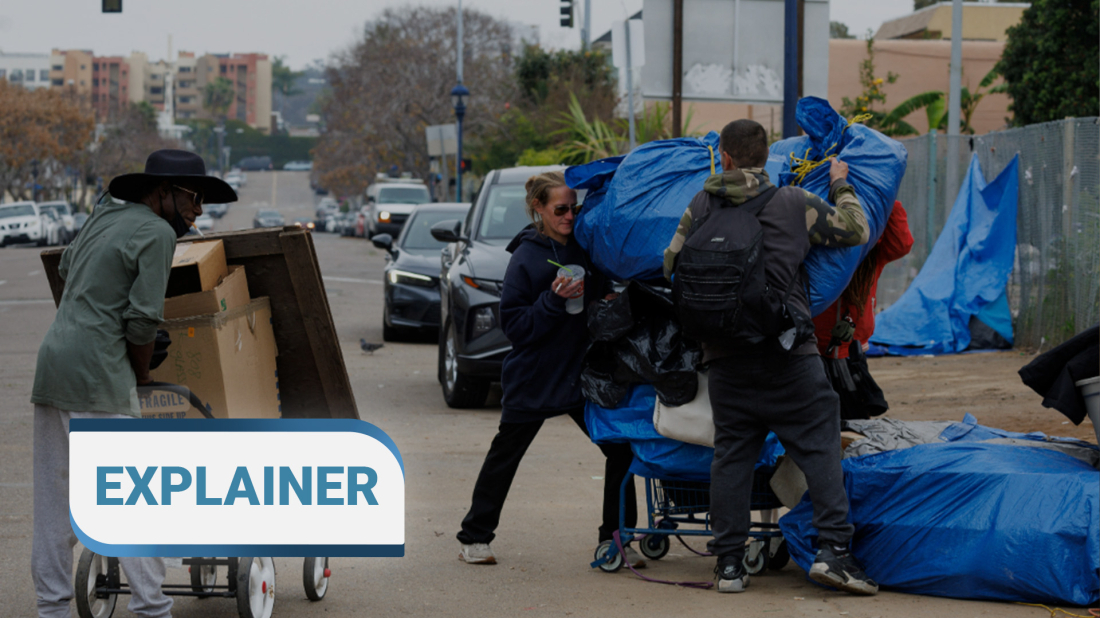China launches nationwide fire safety inspection after Hong Kong inferno
China announced a sweeping inspection of fire-safety standards in high-rise buildings nationwide on Saturday after a deadly fire in Hong Kong left at ...

Homelessness in the United States is at record highs and still rising in 2025. A federal count last year found over 770,000 people without a home, a crisis fuelled by scarce affordable housing, rising costs, migration pressures, and the pandemic’s lasting impact.
The scale of the crisis
The latest annual count by the Department of Housing and Urban Development (HUD) found homelessness in the U.S. jumped by 18% in a single year. That’s a surge of more than 100,000 people from 2023. One in three of those counted were experiencing chronic homelessness, a year or more without stable housing, or repeated episodes of homelessness.
This “point-in-time” survey captures those in shelters, transitional housing, or living outdoors, but it does not include the millions living in overcrowded apartments, couch-surfing, or relying on friends and relatives for a place to sleep. That means the real number of housing-insecure Americans is far higher.
“Where rents go up, homelessness follows. It’s that simple — and that devastating.” — Jeff Olivet, former executive director, U.S. Interagency Council on Homelessness
What’s driving the rise?
While people become homeless for many personal reasons, job loss, family breakdown, illness, the overall national trend closely tracks the cost and availability of housing.
“You can’t solve homelessness with shelters alone. We have to get people into permanent housing and keep them there.” — Rosanne Haggerty, president, Community Solutions
Where it’s worst — and why
Homelessness is far more visible in coastal states and urban hubs.
Race and age patterns are stark: Black and Hispanic Americans are disproportionately affected, and homelessness among children under 18 is rising rapidly.
“Homelessness is not inevitable. It is the result of choices — about housing policy, about wages, about who gets help and who doesn’t.” — Nan Roman, president, National Alliance to End Homelessness
The cost of doing nothing
Homelessness is not just a humanitarian issue, it has social and economic costs.
What works — and what doesn’t
What works:
What doesn’t work alone:
“Homelessness is not just about losing a home — it’s about losing safety, health, and dignity.” — Donald Whitehead Jr., executive director, National Coalition for the Homeless
The policy challenge ahead
Experts agree that to reverse the trend, the U.S. must expand the supply of affordable housing, a slow process that requires changing zoning laws, investing in multi-family housing, and increasing funding for housing subsidies.
In the short term, strengthening prevention programmes, funding rapid rehousing, and maintaining access to mental health and addiction treatment are key. The real test will be whether political will, and budgets, can match the scale of the crisis.
Bottom line:
The surge in homelessness is not inevitable. It is the product of policy choices, housing markets, and economic pressures. Addressing it will require more than managing tents and shelters, it will demand a sustained commitment to making housing affordable, accessible, and a guaranteed part of America’s social contract.
At least 47 people have died and another 21 are reported missing following ten days of heavy rainfall, floods, and landslides across Sri Lanka, local media reported on Thursday (27 November).
Hong Kong fire authorities said they expected to wrap up search and rescue operations on Friday after the city's worst fire in nearly 80 years tore through a massive apartment complex, killing at least 128 people, injuring 79 and leaving around 200 still missing.
U.S. Secretary of Defense Pete Hegseth visited sailors aboard the USS Gerald R. Ford aircraft carrier in the Latin American region on Thursday, amid a military buildup by President Donald Trump’s administration that has heightened tensions with Venezuela.
At least 153 people have been killed in Sri Lanka after landslides and flooding caused by Cyclone Ditwah, officials said on Saturday, with 191 others missing and more than half a million affected nationwide.
The Spanish agricultural sector has been placed on high alert following the confirmation that African Swine Fever (ASF) has resurfaced in the country for the first time in over thirty years.
China announced a sweeping inspection of fire-safety standards in high-rise buildings nationwide on Saturday after a deadly fire in Hong Kong left at least 128 people dead.
The death toll from floods and landslides following cyclonic rains in the Indonesian island of Sumatra has risen to 303, the head of the country's disaster mitigation agency said on Saturday, up from a previous figure of 174.
Hong Kong on Saturday mourned the 128 people known to have died in a massive fire at a high-rise apartment complex, a toll that is likely to rise with 150 still missing days after the disaster.
The global recall of Airbus A320 aircraft has triggered widespread disruption across several major airlines, forcing flight cancellations in the United States, Japan, Australia and New Zealand.
Pope Leo visited Istanbul’s Blue Mosque on Saturday, stepping inside one of the most iconic sites of the Muslim world. He removed his shoes at the entrance in a gesture of respect. He did not appear to pray.
You can download the AnewZ application from Play Store and the App Store.

What is your opinion on this topic?
Leave the first comment